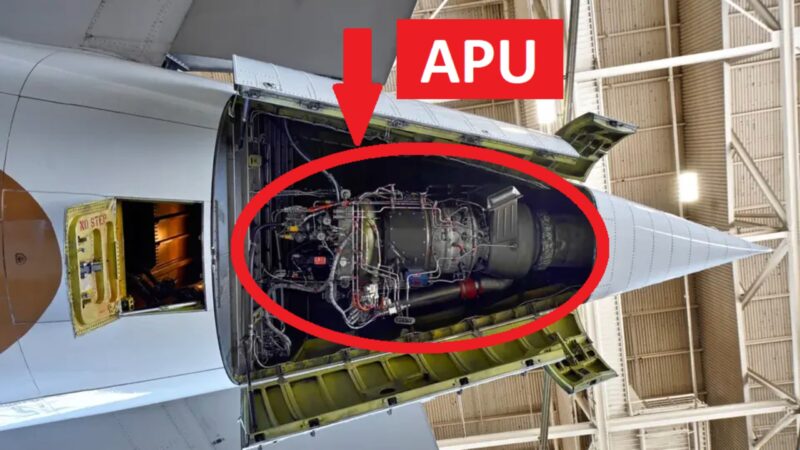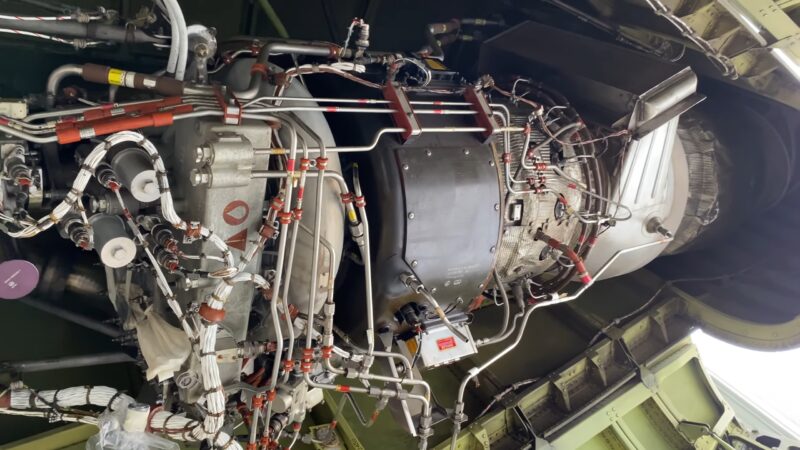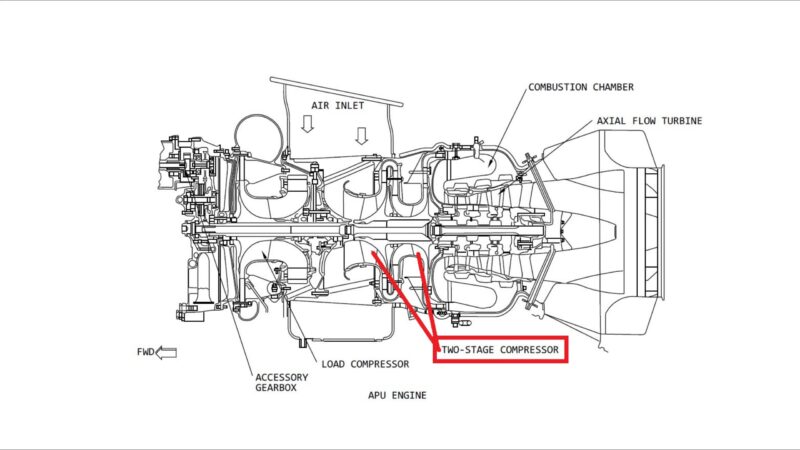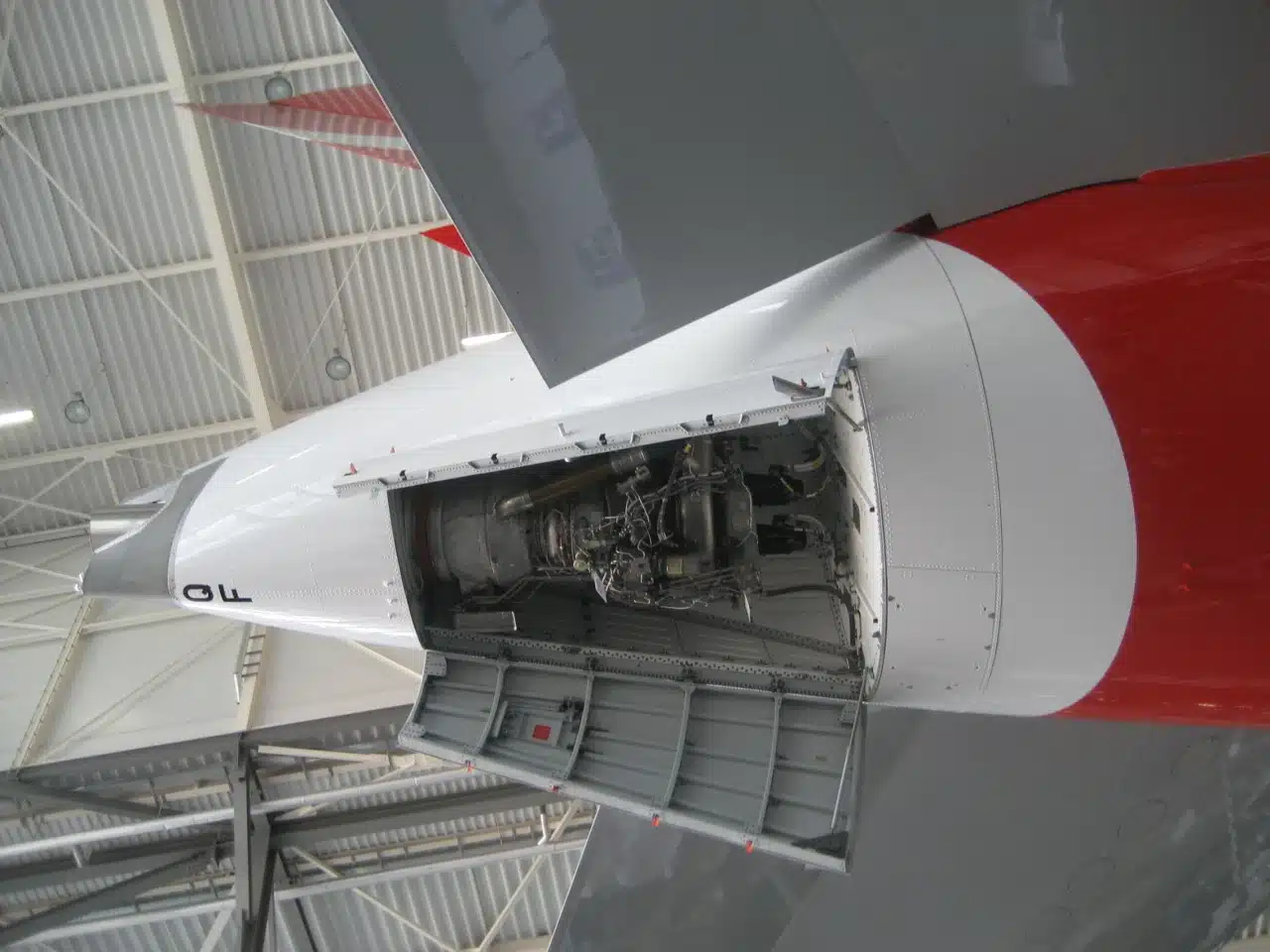The Auxiliary Power Unit stands as a crucial component, often unnoticed by passengers yet vital for the seamless operation of an aircraft. This compact device, nestled within the tail or main body of the plane, plays a pivotal role in ensuring that various systems function efficiently, especially when the main engines are not running.
What is Auxiliary Power Unit?

This unit is primarily responsible for providing energy to various systems of the plane when the main engines are not in operation. Its primary function is to ensure that essential systems, such as lighting, air conditioning, and electronic systems, remain operational, particularly during ground operations or in the event of an in-flight engine shutdown.
It is typically a small turbine engine, located at the rear of the aircraft. It generates power for a range of functions, crucial during times when the main engines are inactive. This includes powering up the aircraft before the engines are started, providing electricity and air conditioning while the aircraft is on the ground, and serving as a backup power source in emergencies.
Components and Working Mechanism

The core components include a small gas turbine engine, a generator for electricity, and a compressor for air conditioning systems. The turbine engine runs on the same type of fuel as the aircraft’s main engines and operates independently.
When activated, it drives the generator and compressor, supplying electrical power and pneumatic pressure to the aircraft. The operation is a marvel of engineering. When activated, it draws in air, compresses it, and then ignites it with fuel.
The resulting high-pressure gas spins a turbine, which in turn drives the generator and compressor. This process efficiently converts fuel into electrical and pneumatic power, essential for various aircraft operations.
Evolution and Technological Advancements
The development has been a journey of continuous improvement and innovation. Early versions were relatively simple, providing basic power needs. However, as aircraft technology advanced, so did the requirements for APUs.
Modern units are not only more powerful but also more efficient and environmentally friendly. Technological advancements have led to the creation of APUs that are lighter, more reliable, and capable of generating greater power output.
These improvements have been crucial in reducing the overall weight of aircraft, leading to better fuel efficiency. Additionally, newer models are designed to minimize environmental impact, with lower emissions and noise levels.
Key Features
| Aspect | Details |
|---|---|
| Function | Provides power to aircraft systems when main engines are off |
| Location | Typically at the rear of the aircraft |
| Components | Gas turbine engine, generator, compressor |
| Operation | Converts fuel into electrical and pneumatic power |
| Evolution | From basic power needs to advanced, efficient, and eco-friendly units |
Roles in Aircraft Operations
One of the primary roles of an Auxiliary Power Unit in an aircraft is to power on-board systems when the main engines are not operational. This is particularly crucial during ground operations, such as pre-flight preparations, boarding, and post-flight processes.
The APU ensures that essential systems like lighting, air conditioning, and electronic devices are functioning, enhancing passenger comfort and operational efficiency. It also powers critical navigation and communication systems, ensuring that pilots can perform necessary checks and preparations before takeoff.
Assisting in Main Engine Start
Another significant role is to assist in starting the main engines of the aircraft. Starting an aircraft engine requires a substantial amount of power, which the APU is designed to provide. It supplies the necessary pneumatic pressure or electrical power to initiate the engine start sequence. This process is vital, especially in situations where external ground power sources are not available.
The ability of the APU to independently start the engines makes it an indispensable tool for ensuring timely departures and minimizing delays. Therefore, it is one of the key components in Aircraft engines.
Emergency and Ground Operations
In addition to its standard functions, it plays a critical role in emergency situations. In the event of an in-flight failure of the main engines or the aircraft’s primary electrical systems, the APU can be activated to provide emergency power. This ensures that essential systems remain operational, aiding in safe flight operations and emergency landings.
On the ground, the APU is also used during maintenance and repair operations, providing power to the aircraft systems without the need to run the main engines, thereby saving fuel and reducing wear and tear.
| Role | Description |
|---|---|
| Powering On-Board Systems | Provides power to essential systems during ground operations and when main engines are off |
| Assisting in Engine Start | Supplies power for starting main engines, crucial for independent operations |
| Emergency Operations | Acts as a backup power source in emergency in-flight situations |
| Ground Operations | Supports maintenance activities by powering aircraft systems on the ground |
Implementation Across Different Aircraft

The design of Auxiliary Power Units varies significantly across different types of aircraft, reflecting the diverse requirements and specifications of each model. Larger aircraft, such as commercial airliners, typically require APUs with higher power output to support their extensive electrical and pneumatic needs.
These units are more complex, incorporating advanced features for efficiency and reliability. In contrast, smaller aircraft may have simpler APUs, focusing on basic power needs with a smaller footprint and weight. The choice for a specific aircraft model is influenced by various factors, including the size of the aircraft, power requirements, fuel efficiency, and space constraints.
Manufacturers tailor APU designs to optimize performance and integration within each aircraft’s unique architecture. This customization ensures that the APU provides the necessary power and functionality while adhering to weight and space limitations.
Efficiency and Environmental Impact
Efficiency is a critical aspect of APU design, with ongoing efforts to develop units that consume less fuel and produce fewer emissions. Modern APUs are designed to be more fuel-efficient, reducing operational costs and environmental impact.
This is particularly important given the increasing focus on sustainability in aviation. Improved efficiency also translates to longer operational life and reduced maintenance requirements, further enhancing the appeal of newer APU models.
Environmental considerations extend beyond fuel efficiency. The latest APUs are engineered to minimize noise pollution, a significant concern at airports. Quieter APUs contribute to reducing the overall noise footprint of aviation activities, improving the quality of life for communities near airports.
| Aspect | Details |
|---|---|
| Design Variations | Different designs for commercial, private, and military aircraft based on size and operational needs |
| Efficiency and Environment | Modern APUs focus on fuel efficiency and reduced noise and pollutant emissions |
| Future Trends | Potential use of alternative fuels, electrification, and smart technology integration |
FAQs
Can an aircraft operate without an APU?
Yes, an aircraft can operate without an APU, but it would rely more heavily on ground power units (GPUs) for electrical power and air conditioning while on the ground. In-flight, the main engines and emergency systems would provide necessary power and functionality.
How long can an APU run continuously?
The continuous run time of an APU varies depending on the aircraft model and the APU’s design. Typically, APUs can run for several hours, but they are usually operated only as long as necessary to reduce wear and conserve fuel.
Is the APU used during flight?
While the APU is primarily used on the ground, it can also be used in-flight, usually for emergency power supply or when additional power is needed, such as during high electrical load situations or when one of the main generators fails.
How does the APU impact fuel consumption of an aircraft?
The APU consumes fuel, but significantly less than the main engines. Its impact on overall fuel consumption is relatively small compared to the engines but can be a factor during extended periods of ground operation.
Are APUs present in all types of aircraft, including small private planes?
Not all aircraft have APUs. While they are common in commercial and larger private aircraft, many small private planes and light aircraft do not have an APU due to size, weight, and cost considerations.
Last Words
The APU, often unnoticed by passengers, is a powerhouse that ensures the smooth and efficient operation of an aircraft, particularly when the main engines are not running. Its ability to power essential systems, assist in engine start-up, and provide emergency support underscores its importance in the aviation industry.
The evolution of APU technology, marked by advancements in efficiency and reduced environmental impact, reflects the ongoing commitment to innovation in aviation.
